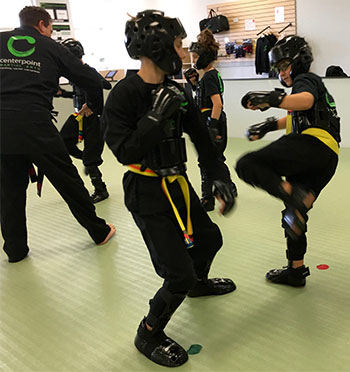Ages Eleven-to-Thirteen: The Second Window
By Andy Mishkin In Insight Early adolescence (ages 10-13) is often viewed with a bit of concern, but there are tremendous opportunities for kids to learn and grow. With a little perspective and a few deep breaths on our part when things get tough, we adults can see past the surface challenges posed by young adolescents and help them achieve amazing things in the martial arts studio and in life.
Early adolescence (ages 10-13) is often viewed with a bit of concern, but there are tremendous opportunities for kids to learn and grow. With a little perspective and a few deep breaths on our part when things get tough, we adults can see past the surface challenges posed by young adolescents and help them achieve amazing things in the martial arts studio and in life.
Adolescence is second only to gestation and the first two years of life in terms of the profound physical, mental, and emotional changes that take place. It’s often called “the second window” and represents the second time our brain develops new structures and systems. Here’s a very brief outline of what’s happening, and the roles we play as parents and coaches (which are more important than ever, as both models and guides).
Adolescents are starting to develop the cognitive skills of adults, including the ability to think independently and to apply observation and reason to their actions, those of others, and to society at large. These interlocking traits often present as rebelliousness, but that’s only part of the picture. The other side of this questioning process is much higher levels of intrinsic motivation. As they see how their hard work leads to results, they can become increasingly self-disciplined and self-motivated. The challenge for the adults in their life is to meet them with patience, logic, and consistency. We have to perceive when to give them autonomy and when to intervene (such as when they get discouraged or off track).
Emotions are still an unexplored country for early adolescents. Their emotional maturity lags well behind their rapidly expanding intellect. One moment insightful and perceptive, the next impulsive and irrational, it is easy to believe this is a deliberate choice on their part (we know it isn’t, but it does feel that way!). The pre-frontal cortex of their brain, which helps us process information objectively and unemotionally, is just starting to develop its final, adult structure. Adolescents still tend to feel first and think after. As a result, early adolescents struggle to understand and process novel or intense experiences. Parents and coaches can help by giving them a roadmap ahead of time that lets them know what they may experience and what skills they should use to get through those moments. For example, when we are teaching sparring in class, we pre-frame how intense they are allowed to be with each other, and pre-frame exactly what it will feel like to hit or be hit by someone else, so they know that their reactions are normal and within the boundaries. That helps them control the emotions associated with sparring, so they do not control them.
Physical development during early adolescent is similar to their mental growth; incredible gains combined with some underlying vulnerabilities. In some ways, their bodies are more delicate than they were just a year or two ago. Rapidly growing bones and joints are vulnerable, they are still more susceptible to heat, cold, and dehydration than adults, and they are much more metabolically active so they can run out of gas very suddenly. In some ways, we need to support their biological needs the way we support those of infants; by being one step ahead of them. We modify physical training or supplement it with specialized exercises to build strength and flexibility, make sure they have adequate rest, set up activities for safety, and pre-frame everything we are asking them to do, to tap into that intrinsic motivation I mentioned earlier in this posting.
Peer relationships are the last piece of the puzzle for early adolescents. Family is still the bedrock of their existence, but the culture of their age group is starting to become much more influential. We do our best to harness this “peer-to-peer” energy by guiding them to support and reinforce each other as training partners. We provide logical reasons for everything that we ask of them, give them all opportunities to lead and shine, and we follow the same instructions and guidelines ourselves. That appeals to their growing levels of intrinsic motivation and their sense of justice and fair play. It also reduces the need for instructors and teachers to assert authority because the students will start to reinforce the culture themselves.
It is a lot easier to write a blog post about teaching adolescents than it is to actually teach or parent them! My own daughter is eleven and I am learning first hand how difficult it can be to present a model of patience and well-timed insight. I’ve made my share of mistakes and will continue to do so. However, that is part of the challenge of being a teacher and the ultimate purpose of Karate: to rise above momentary challenges to help serve people and to help people become their best.
I hope you are all living strong, well and centered. I look forward to sharing my next post with you.



